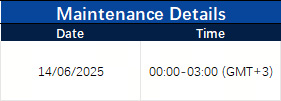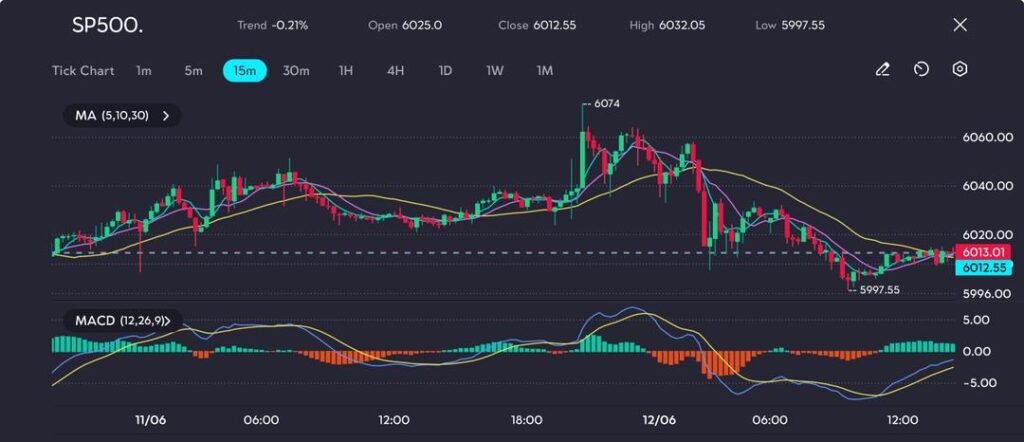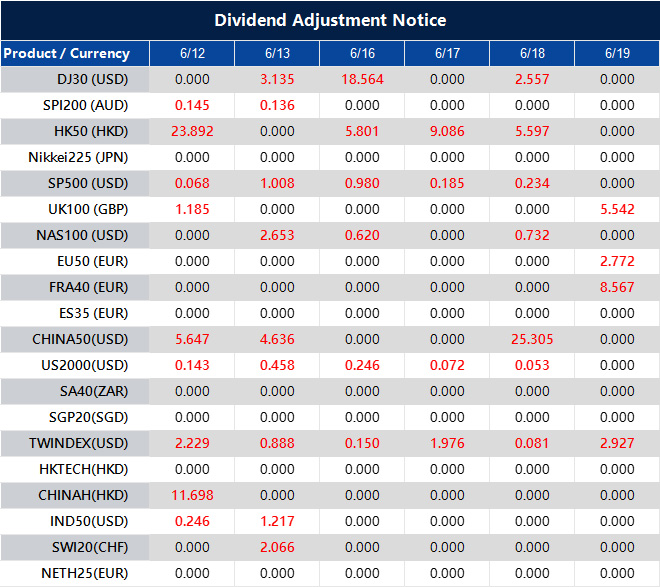Attention AUD traders: RBA’s David Jacobs to discuss Australia’s bond market today in Tokyo
Notification of Server Upgrade – Jun 12 ,2025
Dear Client,
As part of our commitment to provide the most reliable service to our clients, there will be maintenance this weekend.

Please note that the following aspects might be affected during the maintenance:
1. During the maintenance hours, the Client Portal and VT Markets App will be unavailable, including managing trades, Deposit/Withdrawal and all the other functions will be limited.
2. The price quote and trading management will be temporarily disabled during the maintenance. You will not be able to open new positions, close open positions, or make any adjustments to the trades.
3. There might be a gap between the original price and the price after maintenance. The gaps between Pending Orders, Stop Loss, and Take Profit will be filled at the market price once the maintenance is completed. It is suggested that you manage the account properly.
The above data is for reference only. Please refer to the MT4 / MT5 / VT App for the specific maintenance completion and marketing opening time.
Thank you for your patience and understanding about this important initiative.
If you’d like more information, please don’t hesitate to contact [email protected]
Consumer inflation expectations in Australia rise to 5%, impacting AUD performance against other currencies.
S&P 500 Pulls Back As Inflation Data Tempers Market Confidence

The S&P 500 lost ground on Thursday, ending the session at 6,012.55 after briefly touching an intraday peak of 6,074. While initial optimism was sparked by softer-than-expected US inflation figures, that enthusiasm proved short-lived as global risk factors and doubts surrounding the US – China trade truce returned to the fore. The index dipped 0.21% on the day, suggesting some exhaustion after edging close to record highs earlier in the week.
Investor attention was firmly on the latest Consumer Price Index (CPI) release, which indicated that US inflation rose at a slower pace than anticipated in May. Although this eased immediate pressure on the Federal Reserve to adjust interest rates, caution prevailed among traders. Eyes now turn to forthcoming producer price data, which could reignite inflationary concerns, particularly given ongoing cost pressures linked to tariffs. This report will also provide insights into the Fed’s preferred inflation gauge, the Personal Consumption Expenditure Index.
Markets are currently factoring in a 70% likelihood of a quarter-point interest rate cut by September, despite expectations that the Fed will hold steady at its upcoming meeting. Shane Oliver, Chief Economist at AMP Capital, noted that tariffs could either stoke inflation or squeeze corporate margins, reinforcing the rationale for the Fed’s careful approach.
Trade policy developments added another layer of uncertainty. President Trump confirmed that within the next fortnight, the US will begin issuing letters to major trade partners, setting out unilateral tariff terms ahead of new negotiations. Although he hailed the recent US – China deal, which includes relaxed restrictions on rare earth exports and student visas, investors remained sceptical. Many are awaiting more concrete details before committing further.
Technical Analysis
The S&P 500 retreated from its high of 6,074 following a volatile trading session, briefly finding support at 5,997.55 before regaining stability. Despite a promising start, momentum weakened during European hours, with MACD indicators turning negative and red histogram bars signalling a decline in bullish strength.

Moving averages have begun to level out, pointing to a period of consolidation. Although the index is attempting a modest recovery above the 6,000 threshold, upward momentum appears fragile unless prices can regain the 6,030 to 6,050 zone. A drop below 5,995 would increase the risk of a deeper pullback in the near term.
With key inflation data, central bank guidance, and further commentary from Washington on the horizon, volatility is likely to rise. Traders should remain alert for sudden shifts in sentiment as geopolitical uncertainties and market expectations begin to align more closely.
Dividend Adjustment Notice – Jun 12 ,2025
Dear Client,
Please note that the dividends of the following products will be adjusted accordingly. Index dividends will be executed separately through a balance statement directly to your trading account, and the comment will be in the following format “Div & Product Name & Net Volume”.
Please refer to the table below for more details:

The above data is for reference only, please refer to the MT4/MT5 software for specific data.
If you’d like more information, please don’t hesitate to contact [email protected].




